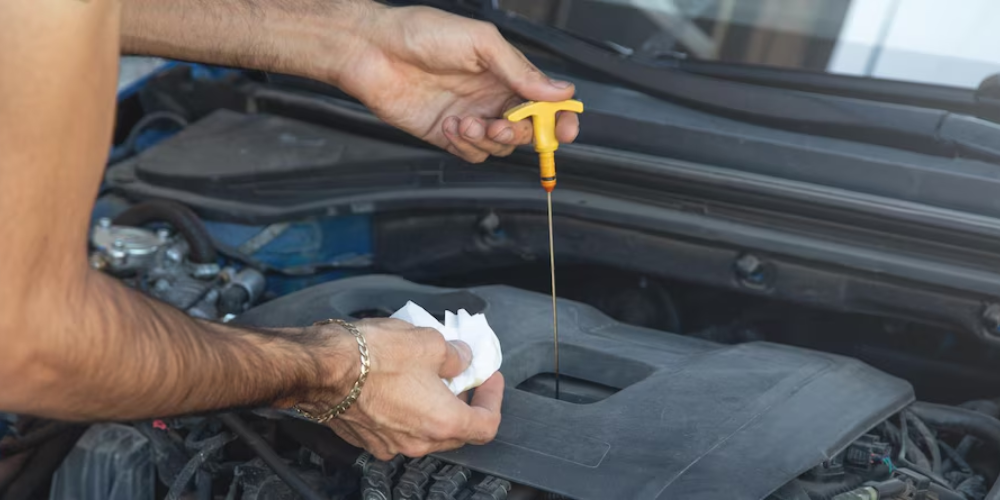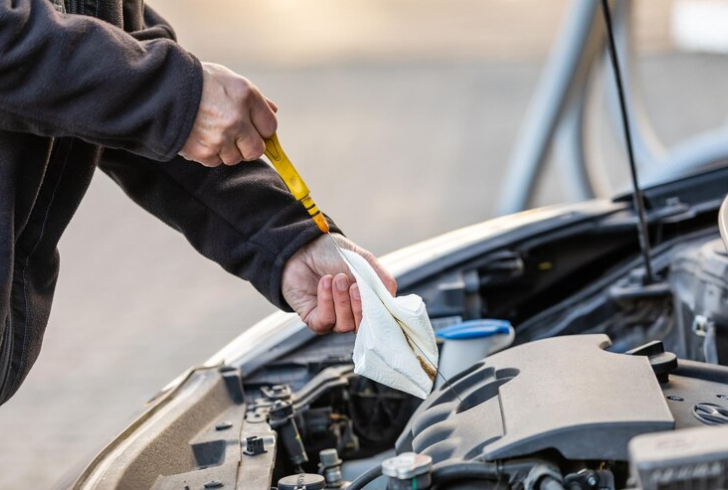
How to Check Transmission Fluid for Optimal Car Performance

Maintaining your vehicle’s transmission is just as essential as other routine car maintenance tasks like oil changes or tire rotations. Knowing how to check transmission fluid can prevent costly repairs and ensure smooth gear shifts. The transmission is one of the most expensive parts to fix or replace, so keeping it in good shape is key to extending the life of your car. Thankfully, the process of checking transmission fluid is simple and straightforward and doesn’t require professional expertise.
Why Checking Transmission Fluid Matters
Transmission fluid plays a crucial role in keeping your car’s gears operating smoothly. It lubricates and cools the internal parts, preventing excessive wear and overheating. Whether your car uses a conventional automatic transmission, dual-clutch automatic, or continuously variable transmission, the fluid must remain clean and at the right level. If you’re unsure about the specific fluid type your vehicle requires, refer to the owner’s manual.
Routine checks not only help ensure proper functioning but can also provide early warnings of potential problems, saving time and money in the long run.

Freepik | EyeEm | For smooth gear shifts, proper transmission fluid levels and cleanliness are essential.
How to Check Transmission Fluid – Simple Steps
Step 1 – Locate the Transmission Dipstick
To start, open the hood and find the transmission dipstick. It’s typically located at the back of the engine bay, near the firewall. The dipstick is usually marked with a distinct color or symbol to differentiate it from the engine oil dipstick.
If your vehicle doesn’t have a visible dipstick, don’t worry. Many modern cars feature sealed-for-life transmissions, which don’t require regular fluid checks. To determine if your car falls under this category, consult the owner’s manual. For sealed systems, professional inspection is recommended if you suspect any transmission issues.
Step 2 – Check the Fluid Level
For vehicles with a dipstick, follow these steps to check the fluid level:
1. Warm up the engine by letting it idle in park on a level surface.
2. Pull out the dipstick and wipe it clean with a lint-free cloth or paper towel.
3. Reinsert the dipstick fully, then pull it out again.
4. Compare the fluid level to the markings on the dipstick, typically labeled “Full” and “Low.”
If the fluid is below the recommended level, it may indicate a leak or other issue requiring further attention.
Step 3 – Examine the Fluid’s Condition
The condition of the transmission fluid provides valuable insight into the health of the transmission. Lay the dipstick on a white paper towel or cloth to analyze its color:
1. Healthy Fluid – A reddish-pink hue indicates the fluid is clean and functioning properly.
2. Needs Replacement – A brownish-red shade suggests the fluid is aging and may need to be replaced soon.
3. Potential Damage – Dark brown or black fluid, especially with a burnt smell or metal shavings, signals internal damage or overdue maintenance.
Regular checks and timely fluid replacements are vital to prevent costly repairs caused by neglect.
What to Do If Fluids Are Low
Low transmission fluid levels usually point to a leak in the system. Start by topping off the fluid using a funnel designed for narrow dipstick tubes. Then, monitor the level daily to assess how quickly the fluid decreases. Visually inspect the underside of the car for any signs of leaking fluid. Fresh transmission fluid is typically reddish, while dark fluid is more likely engine oil. If fluid loss persists, consult a professional mechanic promptly.
Ignoring low fluid levels can lead to overheating, gear slippage, and severe transmission damage. Early intervention can save you from expensive repairs.
Debunking Myths About Fluid Replacement

Freepik | peoplecreations| New fluid boosts performance and lifespan of healthy transmissions.
Some believe that replacing transmission fluid in older vehicles can cause damage. This is a misconception. If the transmission is healthy, new fluid will improve performance and longevity. Issues that arise after fluid replacement usually stem from pre-existing problems, such as worn clutch packs or other internal components.
To maintain a well-functioning transmission, always adhere to the recommended service intervals outlined in your vehicle’s manual.
Signs of Transmission Trouble
In addition to checking the fluid, pay attention to warning signs that may indicate transmission problems:
1. Delayed or Rough Shifting Between Gears
If your vehicle hesitates or struggles when shifting gears, it could be a sign of transmission issues. The gears may feel like they’re slipping or engaging roughly.
2. Strange Noises
Unusual sounds like whining, clunking, or grinding when the vehicle shifts can indicate problems within the transmission. These noises may signal worn-out parts or internal damage.
3. Slipping Gears
If the vehicle loses acceleration even though the engine is revving, it could be a sign that the transmission is slipping. This means the gears are disengaging or not staying properly engaged.
4. Unusual Vibrations or Shaking
If you feel odd vibrations or shaking, especially when the car is in gear, it could be related to transmission issues. These vibrations often indicate a problem with the internal components.
Addressing these symptoms early can help prevent further damage.
Pro Tips for Maintaining Transmission Health
To keep your transmission in peak condition:
1. Schedule regular fluid checks and replacements as recommended by the manufacturer.
2. Avoid aggressive driving habits, such as hard accelerations or abrupt stops.
3. Keep an eye out for leaks and unusual performance changes.
4. Use the correct type of transmission fluid to avoid compatibility issues.
Proper maintenance ensures smooth gear transitions, improved fuel efficiency, and extended vehicle lifespan.
Learning how to check transmission fluid is an easy and effective way to ensure your vehicle’s performance and longevity. From locating the dipstick to evaluating fluid levels and condition, these simple steps can save you from expensive repairs down the road. Regular transmission maintenance not only enhances driving comfort but also protects one of the most vital components of your vehicle.
More inAdvice
-
`
How to Safely Drive Away from Wildfires – Essential Tips
Wildfires are unpredictable and dangerous, often spreading rapidly with little warning. A video from the Los Angeles wildfires showed abandoned cars...
February 1, 2025 -
`
Can Your Car Keep You Safe During an Emergency?
Natural disasters such as wildfires, hurricanes, and floods can occur unexpectedly, leaving little time to prepare. In such situations, your car...
January 25, 2025 -
`
Tesla Reveals 2025 Model Y Juniper – Here’s What’s New!
Tesla has revealed the 2025 Model Y Juniper, a refreshed version of its best-selling electric SUV. This update enhances design, comfort,...
January 25, 2025 -
`
Sutton Foster and Hugh Jackman Spark Romance on L.A. Date Night
Hollywood is abuzz with the latest photographs of Hugh Jackman and Sutton Foster, who appear to be confirming their romance during...
January 16, 2025 -
`
How to Fix Car Window Off-Track and Align It Properly
When your car window gets stuck or misaligned, it’s often due to an off-track issue. Learning how to fix car window...
January 10, 2025 -
`
How to Drive a Stick Shift: A Quick Guide for Manual Beginners
Driving a stick shift requires coordinating the clutch, brake, and accelerator to control a car with a manual transmission. Manual cars...
January 3, 2025 -
`
Why Drowsy Driving Is Just as Dangerous as Drunk Driving
Drowsy driving poses a serious risk to road safety, yet many underestimate its dangers compared to drunk driving. The National Sleep...
December 27, 2024 -
`
Where Is Hyundai Made? A Look Inside Global Manufacturing Hubs
Hyundai vehicles dominate roads worldwide, offering reliability and innovation. Yet, only some people know where these cars are actually made. The...
December 20, 2024 -
`
Why Am I Having Trouble Passing My Permit Test? Top Tips for Success
Failing the permit test can feel like a major setback, especially when you’ve put in the effort to prepare. The material...
December 20, 2024















You must be logged in to post a comment Login